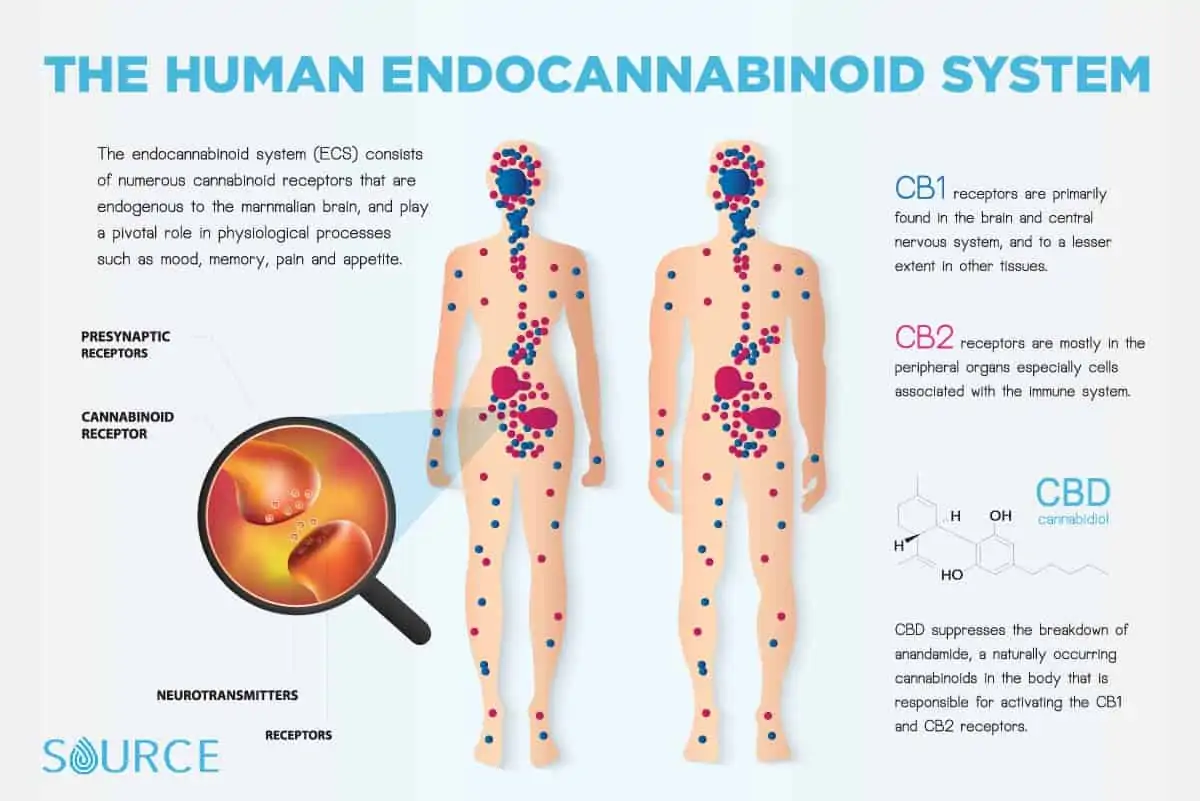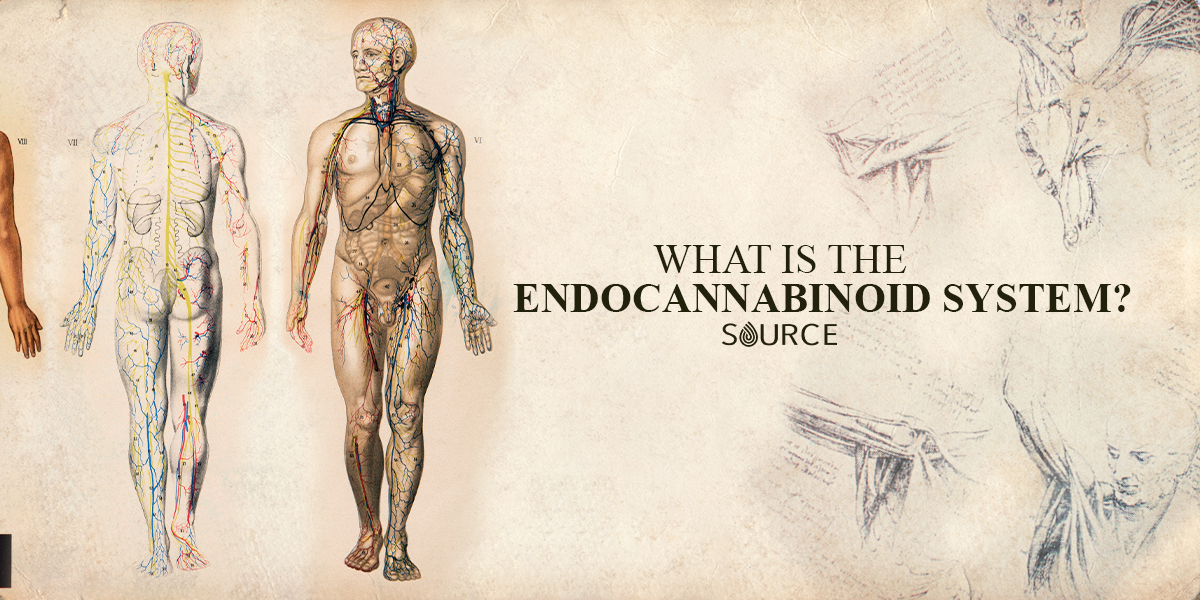CBD Oil for Health
What is the Endocannabinoid System? A Simple Guide
If you’ve heard about CBD oil, chances are you’ve heard about the fancy system that makes it work: the Endocannabinoid System (ES).
This is a complex biological system the runs through your entire body.
The ES was discovered in the late 1980s, and scientists are still learning about its role in your overall health, but so far they’ve determined that it plays an important role in a wide range of functions, including:
- sleep
- mood
- appetite
- pain sensation
- memory
- reproduction and fertility
So, how does it do that?
How Does the Endocannabinoid System Work?
The Endocannabinoid System works by bringing about homeostasis, or balance, within the body. When your body is out of whack, it can’t preform the necessary functions required to keep it in tip-top shape – and that includes things like digestion, pain regulation, or even fighting off harmful bacteria. Conditions need to be just right for your cells to maintain optimum performance.
So, the ES helps get things back to optimal condition.
Yes, ok, but how? Well, it’s a process.
The ES is made up of 3 distinct parts:
- Endocannabinoids
- Endocannabinoid Receptors
- Enzymes

Endocannabinoids
Endocannabinoids, also called endogenous cannabinoids, are small molecules your body makes that activate endocannabinoid receptors. They’re sort of like the cannabinoids you can put into your body, like CBD. The major difference is, the cells in your body naturally produce them. That’s where the name comes from – “endo” means “within,” as in within the body.
So far, experts have identified two key endocannabinoids:
- anandamide (AEA) – also known as the “bliss” molecule. Anandamide is a fatty acid neurotransmitter which is thought to have an impact on memory and early stage embryo development.
- 2-arachidonoylglyerol (2-AG) – 2-ArachidonoylGlycerol (2-AG) is present at high levels in the central nervous system.
Both of these endocannabinoids are made from fat-like molecules within cell membranes. They’re synthesized on-demand, so they’re made and used exactly when they’re needed. Your body doesn’t just produce them and store them for later.
So, when your body recognizes something’s not as it should be, endocannabinoids head off to the receptors and get to work.
Endocannabinoid Receptors
Endocannabinoid receptors are located on the surface of cells. They transmit information about changing conditions to the inside of the cell, causing the appropriate cellular response. Much of that information actually comes from endocannabinoids, which bind to receptors in order to signal that the ES needs to take action.
There are two main endocannabinoid receptors:
- CB1 receptors – found primarily in the central nervous system and the brain
- CB2 receptors – found primarily in your peripheral nervous system, the organs, the glands, and probably most important, the immune system
Endocannabinoids can bind to either receptor, but the resulting change will depend on where the receptor is located and which endocannabinoid it binds to.
So, this is essentially where the magic happens. These receptors receive the messages from endocannabinoids, and get to work making changes in the body.
Enzymes
Enzymes are the follow up players in the process. They break down endocannabinoids once they’ve carried out their function and are no longer needed by the body.
There are two main enzymes responsible for this:
- fatty acid amide hydrolase (FAAH), which breaks down AEA
- monoacylglycerol acid lipase, which typically breaks down 2-AG
RELATED: There are plenty of ways to help support your ES. Check this out!
The Role of CBD in the ES
So, if your body naturally produces endocannabinoids, what role does CBD play in your overall health?
Even though we’ve been studying the Endocannabinoid System and CBD for decades now, scientists are still working on figuring out exactly how the two work together. Many believe CBD works by preventing endocannabinoids from breaking down. This allows them to have more of an effect on your body.
For example, CBD inhibits the FAAH enzyme, which breaks down anandamide. CBD can increase anandamide levels by preventing FAAH from breaking it down. So, this means it’s available longer so the body can keep using it.
Others believe that perhaps it is simply that CBD binds to a receptor that hasn’t even been discovered yet.
Whatever the case may be, we do know that the body requires endocannabinoids (or cannabinoids) to function at optimal levels, so boosting the levels of them in your body is always a good idea!

